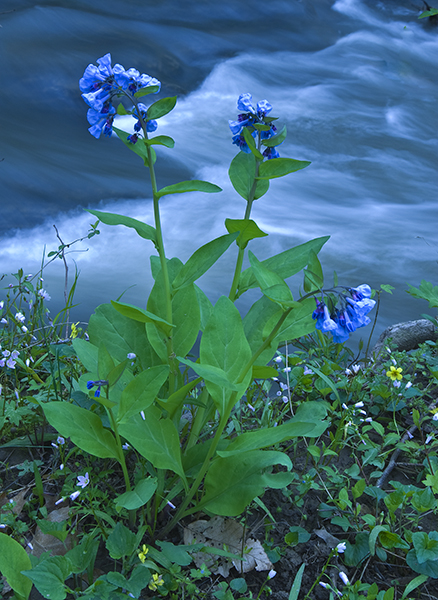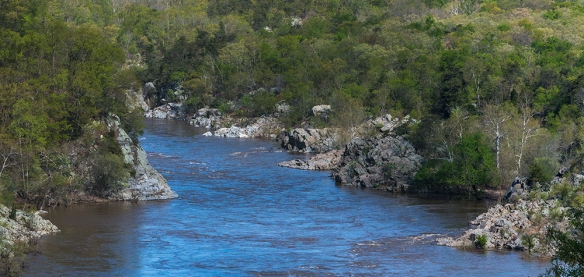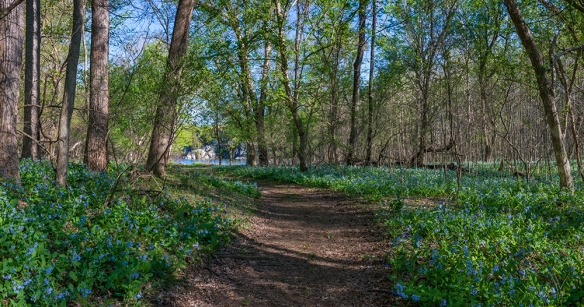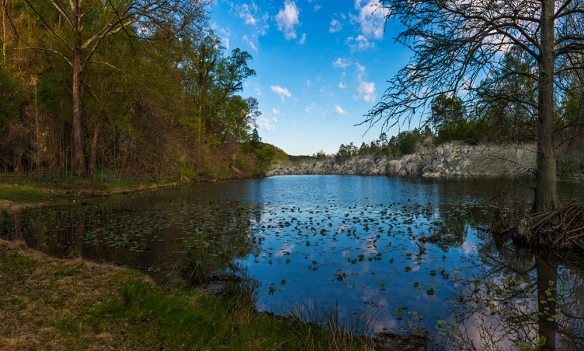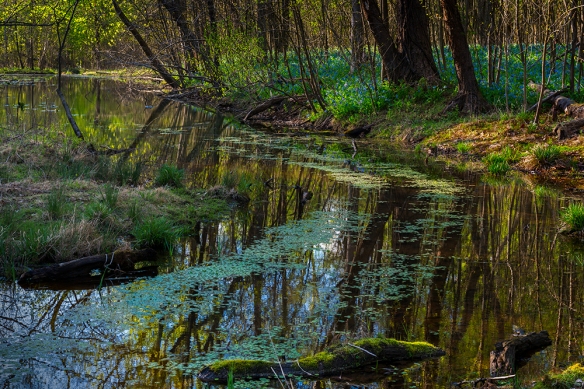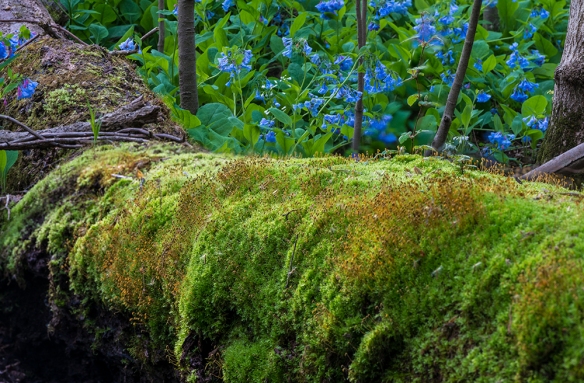Every year in mid-April, a few wooded areas in northern Virginia (as well as Maryland) are briefly transformed with dazzling carpets of blue. It seems only certain places, usually bordering a stream or the Potomac River itself, have the perfect conditions for a magical wildflower, the Virginia bluebell.
Virginia bluebells & other wildflowers along Potomac River side channel, 2009
The plant has a fleeting existence above ground. They appear when only a few weeks of warm weather remain before the life giving sunlight is blocked out by the emerging leaves of the overhead tree canopy. On the Virginia side of the Potomac, large tracts can be found in public places such as Riverbend Park along the Potomac River and Bull Run Regional Park along Cub Run.
Another location, which requires permission to enter, is the Madeira School, located in McLean, Virginia along the Potomac River. One morning last week, when the blooms were at their peak, I tagged along with fellow photographer and blogger Stacy Fischer who did have permission for a photo shoot at Madeira. Please check out her report by clicking here.
Here are a few iumages from that morning. Some technical notes are included at the bottom keyed to the numbers in parentheses.
View from a bluff above the Potomac as it exits Mather Gorge (1)
The trail leading to Black Pond (2)
Bluebells, with Black Pond in background (3)
Black Pond, spring fed and almost completely encircled by a bedrock terrace (4)
Outlet stream from Black Pond (5)
Moss covered log and bluebells
*Some technical notes:
Image 1: Telephoto image cropped for equivalent of 250mm view;
Image 2: Two images combined with Photomerge in Photoshop
Image 3: Two wide angle(36 mm) images; one focused on flowers, second on pond & rocks, then supermimposed on each other in Photoshop. Masking technique used to reveal only portions in focus.
Image 4: Three images combined with Photomerge in Photoshop.
Image 5: Single image, but difficult lighting required 6 Curves Adjustment layers and two Gradient layers in Photoshop.
Image 6: Two telephoto (200 mm) images; one focused on log, second on bluebells, then supermimposed on each other in Photoshop. Masking technique used to reveal only portions in focus. Should have taken two more images because log on right side and moss on left side are not sharp. There is very little depth of field with telephoto images of close objects, even at F/16.
Thanks again to Stacy for inviting me along. I’ve been an avid fan of her Visual Venturing Blog since I discovered it early last year and her AfterBefore Friday Forum series has been great fun.

